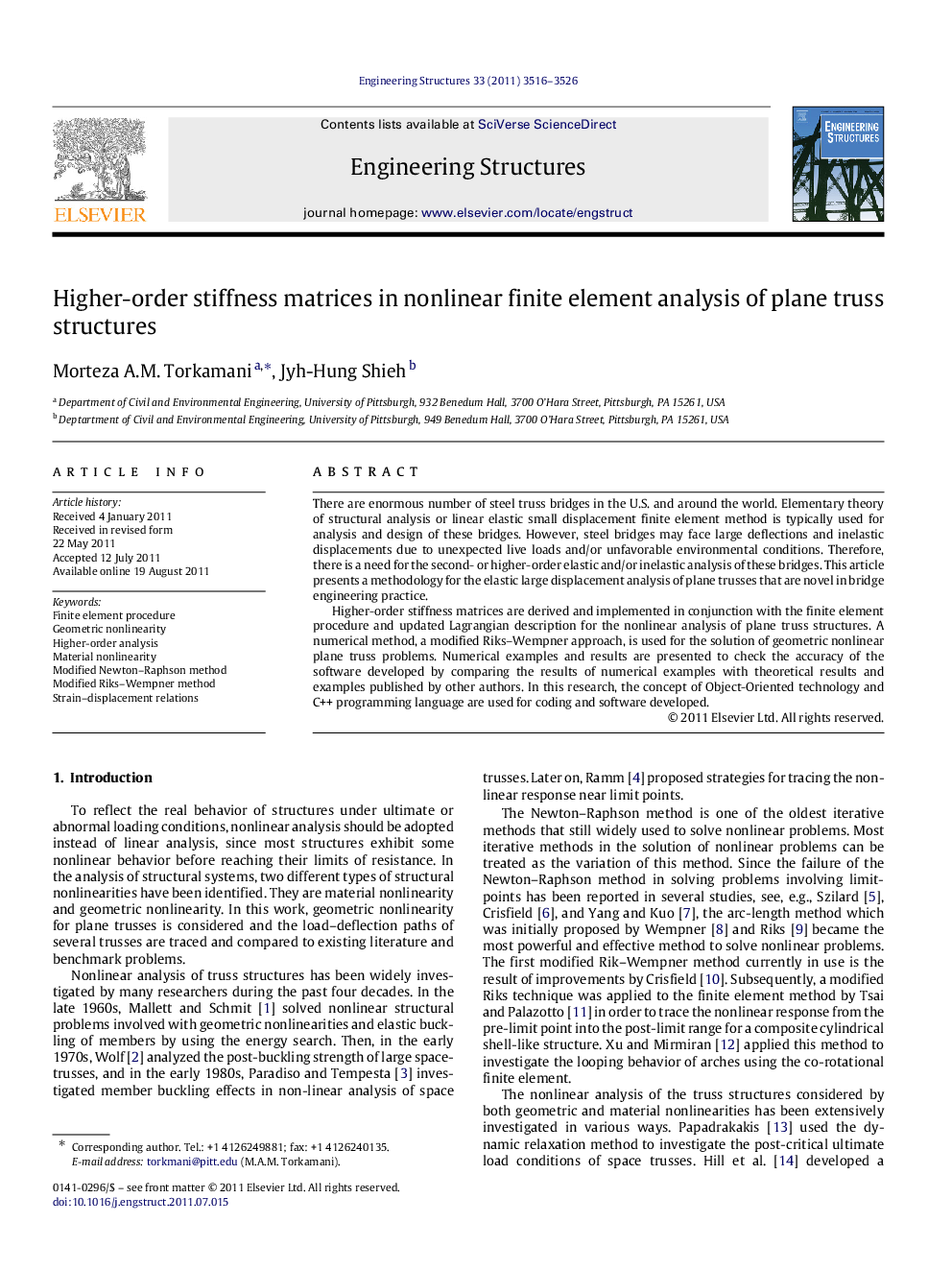| Article ID | Journal | Published Year | Pages | File Type |
|---|---|---|---|---|
| 268055 | Engineering Structures | 2011 | 11 Pages |
There are enormous number of steel truss bridges in the U.S. and around the world. Elementary theory of structural analysis or linear elastic small displacement finite element method is typically used for analysis and design of these bridges. However, steel bridges may face large deflections and inelastic displacements due to unexpected live loads and/or unfavorable environmental conditions. Therefore, there is a need for the second- or higher-order elastic and/or inelastic analysis of these bridges. This article presents a methodology for the elastic large displacement analysis of plane trusses that are novel in bridge engineering practice.Higher-order stiffness matrices are derived and implemented in conjunction with the finite element procedure and updated Lagrangian description for the nonlinear analysis of plane truss structures. A numerical method, a modified Riks–Wempner approach, is used for the solution of geometric nonlinear plane truss problems. Numerical examples and results are presented to check the accuracy of the software developed by comparing the results of numerical examples with theoretical results and examples published by other authors. In this research, the concept of Object-Oriented technology and C++ programming language are used for coding and software developed.
► A literature review on geometric and material nonlinear truss analysis is presented. ► Stiffness matrices for nonlinear elastic incremental plane truss analysis are presented. ► A modified Riks–Wempner method is presented including an algorithm for software development. ► Five examples are solved and the load–displacement curves for some nodal points are traced. ► Summary and conclusions are given.
